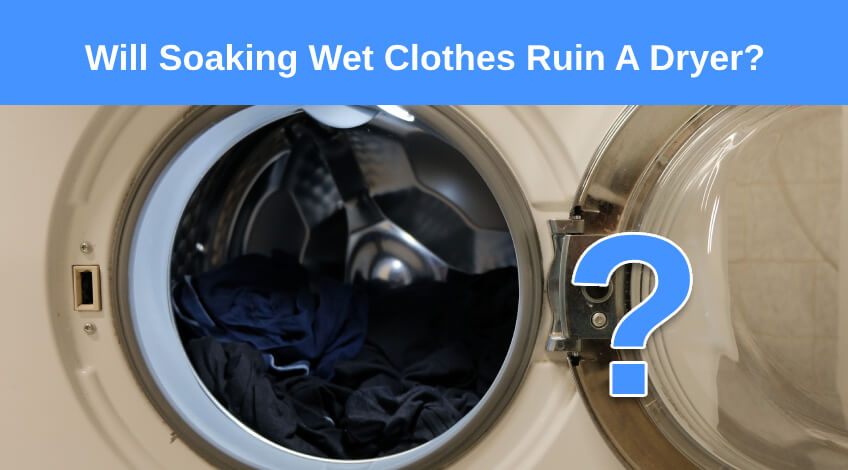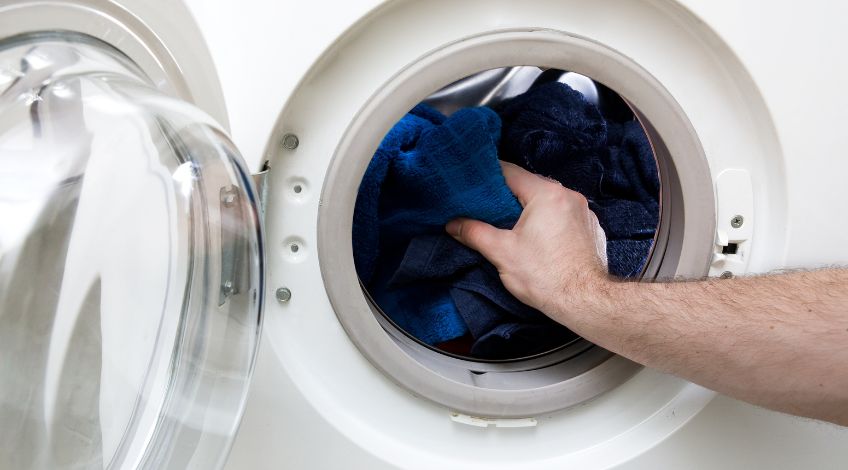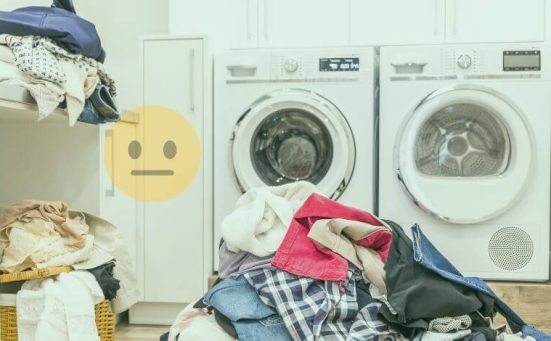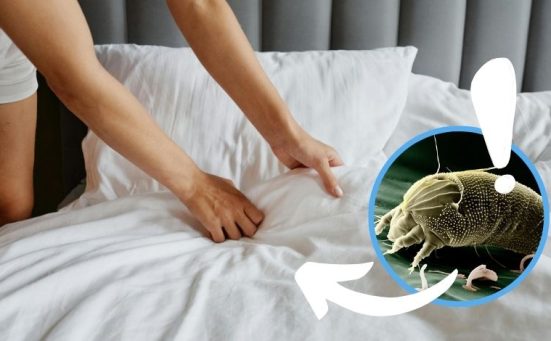
Will Soaking Wet Clothes Ruin A Dryer?
Since a dryer is meant to, well, dry clothing, it is normal to wonder if it’s okay to put dripping wet clothes in it.
After all, when you handwash your garments, use a faulty washer, or have clothes that are wet from the rain, it’s tempting to just toss them in the tumble dryer to get rid of the moisture.
However, is it really okay to do so? Let’s find out!
Putting dripping clothes inside a dryer – does doing it break your machine?
Let’s cut to the chase: Yes, putting soaking wet clothes inside your dryer can definitely ruin it. Especially if you do so frequently – not only will you risk damaging your machine, but also your clothing.
Think of it this way: Although tumble dryers exist to help get our clothes dry at a faster rate, it is still important to remember that they are meant to dry damp fabrics, not dripping wet ones.

Hence, if you are doing so now, think twice or else you’ll end up with a costly mistake. This is especially the case for most of us who are using regular residential dryers that are not designed to handle excessive moisture.
Reasons why you shouldn’t put soaking clothes inside your tumble dryer
Let’s have a closer look into why you should avoid putting wet fabrics in your dryer:
It will take more time for your clothes to dry
When you put super wet clothes inside your dryer, chances are your machine will not get rid of the excess moisture effectively. Why?
Because dryers are designed to operate within a set amount of time to get a set amount of moisture. In this case, if you’re putting dripping fabrics in it, there’s a huge chance that it’ll still be slightly wet when the load is complete.
Compare that to when the clothes are only slightly damp – once the dryer is done, you’ll be left with garments that are all dry and ready to wear.
SEE ALSO: What Temperature Should You Dry Clothes With In A Tumble Dryer?
It will damage your garments
When you’re putting waterlogged garments inside your dryer all the time, you shouldn’t be surprised when they have a bad smell or worse, already start to fray or have holes.
Why does this happen?
When your clothing is wet when put in the dryer, this unnecessarily puts them into more friction with each other. As a result, there’s more wrinkling and the lifespan of the clothing is significantly reduced.
Another thing you should watch out for is mould and mildew growth. If your garments are always moist, this is the time when bacteria and fungi will likely start growing on your clothes, which will make them smell foul.
NOTE: Mould and mildew on your garments can be very dangerous to your health[1]. If you notice a powdery substance on your garments, separate the affected clothes and treat them with vinegar or bleach. Make sure to read the care label to avoid ruining your garments.
It is a waste of resources
When you’re clothing is still wet once a dryer cycle is complete, then you’ll probably need to run another just to get rid of the moisture.
Unfortunately, doing several cycles is not only a waste of time, but also a waste of energy. If you frequently put soaking wet garments in the dryer, don’t be surprised if your electricity bill skyrockets.
Just imagine the money you’ll be able to save by just making sure that your clothes are at least damp before taking them on a spin.
It will damage your dryer in the long run
Finally, the worst thing that can result from putting wet clothes in your dryer is that it could damage your machine.
As you know, wet clothing is significantly heavier compared to damp ones. Since tumble dryers are only meant to accommodate a specific weight, placing wet garments inside puts a huge strain on their components.
As an example, your dryer’s drum and bearings are the parts that will mostly be affected if you continue putting heavy clothes in your dryer. Also, if your fabrics are extremely wet, this can damage the heating element of your machine as time passes.
What to do instead of putting wet garments in the dryer
Now that you know why we highly advise against putting waterlogged clothes in the dryer, let us give you some tips to avoid this habit.
Instead of putting soaking clothes inside, it’s better to:
Wring your garments manually
Before putting your clothes in the dryer, try wringing them manually. Doing so allows you to remove a significant amount of moisture in your fabrics so that they’ll dry normally in the dryer.
Allow it to drip outdoors
Do you have a clothesline to hang your clothes? If so, the best thing you can do is allow them to air dry. Not only will it be great for the environment, but you’ll end up saving on energy costs.
If you don’t have a clothesline or significant space in your area, investing in a durable clothes rack is certainly worth the money.
- 4m of drying space which can be extended out to a generous 7.5m when required
- Folds down flat to a size of only 51 x 44 x 9cm
Make sure to only put damp garments in the dryer!
We get it – it’s tempting to toss dripping clothes straight into the dryer to save time.
Unfortunately, as we’ve mentioned in this article, the damage that may result to your clothing, machine, and even your wallet is simply not worth it.
Do you have questions about drying your garments? Don’t hesitate to leave them below!
Frequently Asked Questions
If excessive amounts of water get in your dryer, there’s a chance that it can damage its electrical parts. To avoid this, reduce the amount of moisture in your dryer by wringing your fabrics beforehand.
It’s best to only allow clothes to be wet for 8 to 12 hours, or you’ll risk them smelling foul or growing mildew.
It is absolutely okay to leave wet clothes outdoors to dry by hanging them on a clothesline.
If you leave your wet clothes in the washing machine for a week, they will probably smell foul and may already have mould or mildew growing on their fabric.
If you always leave wet clothes in the dryer, there’s a huge chance that your machine has already started growing mildew. Make sure to clean your dryer or seek the help of a professional for maintenance work.
Also, follow us on Pinterest ...




